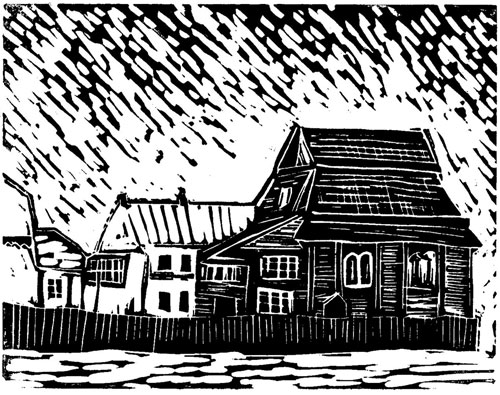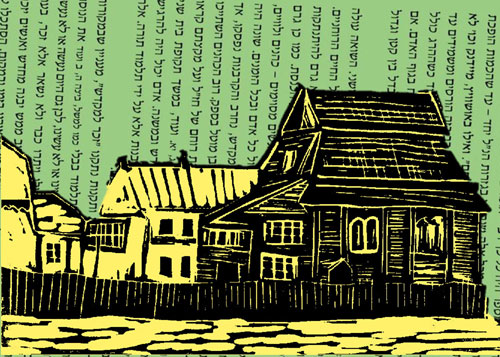Lost Treasures: The Wooden Synagogues of Eastern Europe The Artwork of Bill Farran
"Kelmė, Lithuania - Original Linocut
Kelmė, Lithuania - Original Linocut
Yiddish name: Kelm; Polish name: Kielmy Probishta
The wooden synagogue of Kelme stood for approximately three hundred years. According to legend, the town was owned by Poritz (noble landowner) Grozheviski, who lived on a large estate outside the town. The poritz had no male heir, and in desperation for a son, he asked the Jews to pray for him. To show his gratitude for their prayers when his wife gave birth to a son later that year, the poritz built a synagogue for the town’s Jews and freed them from taxes.
While the synagogue may not have been the largest, it was famous for its ancient artifacts throughout Lithuania. Built of wood with a wooden shingle roof reminiscent of a pagoda, its style was common in Eastern Europe.
According to the 1923 census there were 1,599 Jews living in Kelme. Most were small shopkeepers and artisans, but there were also grain and timber merchants as well as owners of brush factories and tanneries.
The Germans occupied Kelme shortly after the outbreak of war between Germany and the Soviet Union during World War II. The shtetl’s Jews were murdered between July and August 1941.
Purchase a print
Original linocut prints are 8x10 inches, and are available either unmatted or in an 11x14 matte.
I also offer matted 5x7 digital prints. These prints are created from high-res digital images and come in an 8x10 matte.
For this synagogue I have created an additional digital print, with Hebrew lettering in the background. These prints are also created from high-res digital images and come in an 8x10 matte.



